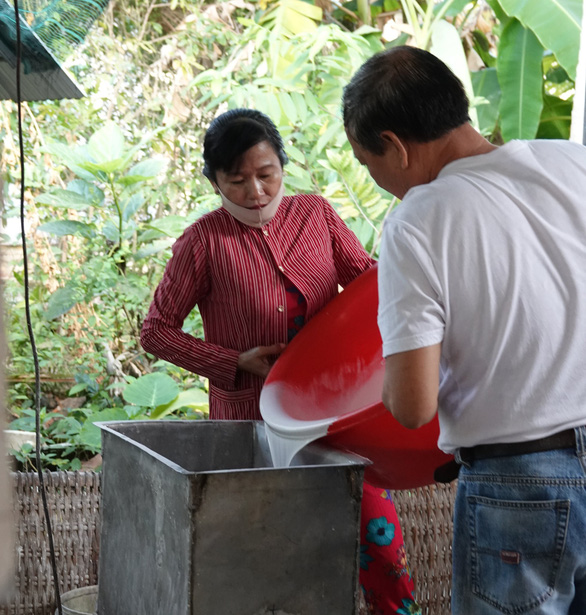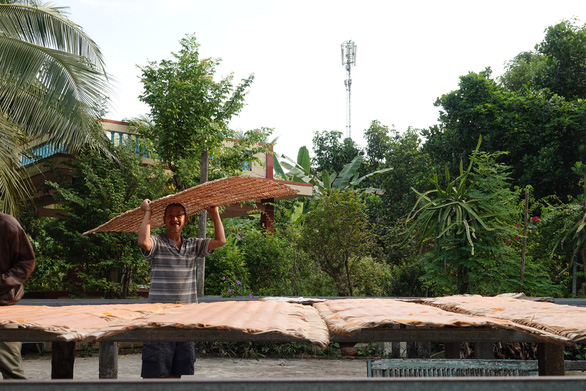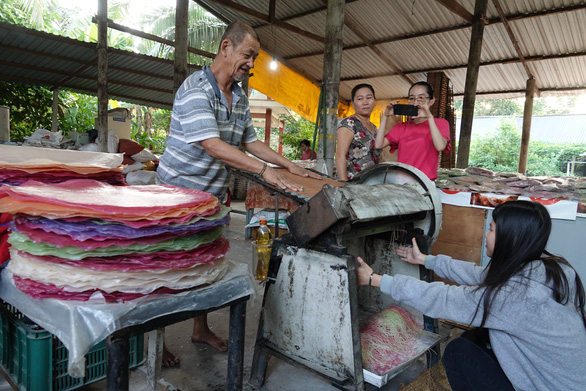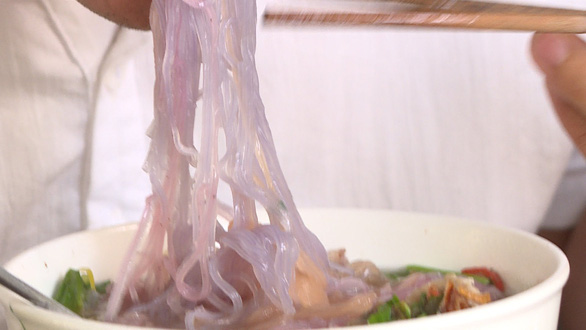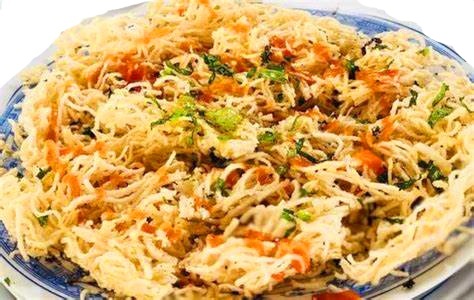Hu tieu (rice noodles) have long been a must-try dish on any visit to Vietnam’s Mekong Delta, but the five-colored hu tieu in Can Tho City offers visitors a fun twist on the long-standing local specialty.
The Cai Rang floating market is one of Can Tho’s most popular tourist attractions, and those who choose to take a boat ride through Cai Rang rarely pass up the opportunity to try the hu tieu sold by Huynh Huu Hoai (Sau Hoai) and his family on the banks of the Rau Ram Canal in the city’s An Binh Ward.
What makes Sau Hoai’s hu tieu so popular is his family's unique takes on the dish -- a pizza-inspired version and naturally-dyed one featuring five vibrant colors.
Sau Hoai leads three generations of family members each day as they produce hu tieu for hungry tourists and locals alike.
Each and every noodle thread produced by Sau Hoai and his family is handmade and sun-dried until their texture reaches the perfect balance of soft and chewy.
To ensure that his noodles maintain the sweetness of the rice, Sau Hoai is extremely intentional in selecting his ingredients.
Once the perfect batch of rice is chosen, it is soaked, ground, and put in big containers for white rice starch to separate and sit at the base of the containers, liquid on top.
|
|
| Grinding soaked rice and mixing the powder with water are important steps in producing soft and chewy 'hu tieu.' Photo: D.Khoi / Tuoi Tre |
The starch is then removed from the containers and flattened into round sheets. This step is important as it requires makers to be skillful to ensure that the hu tieu sheets are equally thin.
The sheets are then steamed before being placed on bamboo lattice for three to four hours while they dry under the sun.
|
|
| The ground rice is molded into round sheets, which are later steamed. Photo: T.Luy / Tuoi Tre |
|
|
| After being steamed, the sheets are dried in the sun. Photo: T.Luy / Tuoi Tre |
Once dried, the sheets are sliced – the final step before they are boiled for eating.
|
|
| The dried 'hu tieu' sheets are sliced into 'hu tieu' strings. Photo: T.Luy / Tuoi Tre |
In the past, Sau Hoai and his family only produced whiteand yellow hu tieu that had been died using turmeric powder.
Nowadays, however, the family has expanded their selecting to five different colors of hu tieu dyed using nothing but fruits and vegetables.
Specifically, Sau Hoai’s orange hu tieu is colored with juices from gac fruit, while indigo is made from butterfly pea flowers, green from pandan leaves, purple from magenta plant, and pink from beetroots and red dragon fruit.
Not only does each color offer a feast for the eyes, but they also add an extra layer of flavor to the noodles.
According to Sau Hoai, the idea to spice up his noodles with a vibrant pallet of colors was just one of several initiatives taken by his family to attract more guests, including improving food safety standards and adding unique flavors to each dish in order to provide a more memorable experience.
Sau Hoai and his family also offer visitors the chance to try making the hu tieu noodles themselves by dipping the strings in hot water before adding stock, bean sprouts, pork, shrimp, and quail eggs.
|
|
| 'Hu tieu' strings are dipped in hot water and mixed with stock and spices. Photo: D.Khoi / Tuoi Tre |
Sau Hoai and his family are also known for their 'pizza hu tieu' – a unique take on hu tieu that involves shaping the noodles into a pizza-like round, frying them, and topping them off with sliced fried eggs or pork braised in coconut water.
Crispy fried onion, peanuts, vegetables, chilli sauce, and tomato sauce can be also added to give the dish the pizza feel.
|
|
| 'Pizza hu tieu' is made by Sau Hoai and his family. Photo: Tuoi Tre Contributor |
Like us on Facebook or follow us on Twitter to get the latest news about Vietnam!




